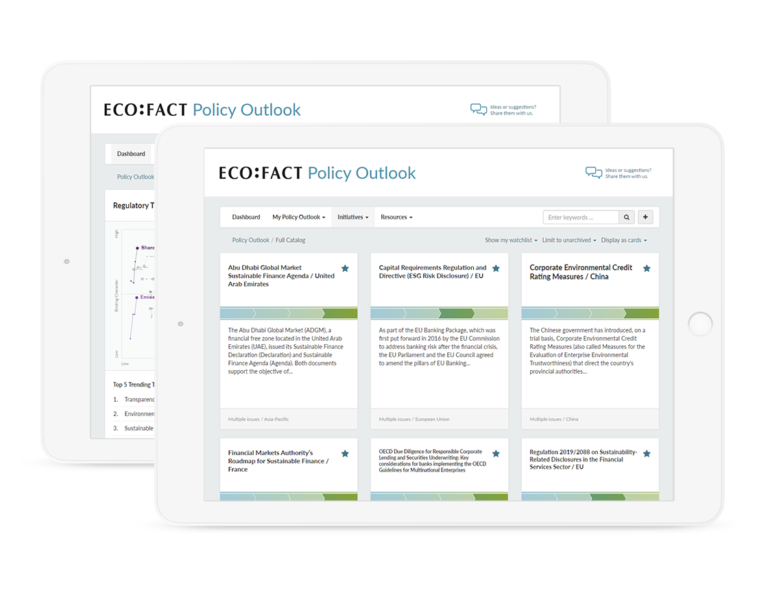The COP27: key takeaways and main developments

This year’s UN Climate Change Conference of the Parties (COP27) unfolded amid difficult circumstances. Russia’s invasion of Ukraine and the effects of the coronavirus pandemic have triggered a global crisis. Generally, the goal of COP27 was to translate the pledges made during COP 26 into actions.
So, set against this somewhat difficult context was the meeting a success?
Political highlights
Well, there were successes and there were disappointments. The final political agreement is the Sharm el-Sheikh Implementation Plan.
Most notably, a clear success was the agreement reached around “loss and damage,” which should begin the work to set up a dedicated fund that provides financial reparations to developing countries to help them deal with storms, floods, and other climate-related disasters largely caused by the carbon emissions from wealthier, industrialized countries. However, it remains unclear how the fund will be distributed and who will pay into it.
Countries reaffirmed their commitment to limit global temperature rise to 1.5°C. Although COP27 managed to keep this target alive, based on existing pledges, the world is on track to see global warming of 2.6°C. This indicates the Paris Agreement goal continues to be out of sight, and climate science is doubtful about whether it is even achievable. Nonetheless, it is important to highlight in this context, that each degree to which climate change can be limited will ultimately make a difference.
A push to phase down all fossil-fuel use failed. However, some countries bilaterally agreed upon coal-related phase outs. Already during COP 26 a deal was reached with South Africa to support a coal phase-out, during this year’s COP a similar deal was reached with Indonesia.
The International Sustainability Standards Board (ISSB): Toward a global baseline
Formed during last year’s COP in Glasgow, the ISSB has been working to establish a common baseline for sustainability disclosures; however, several jurisdictions are proposing their own disclosure requirements that deviate from the ISSB has proposed.
In the run-up to COP27, the ISSB took steps to increase the ambition of its standard:
- Required Scope 3 disclosure: In its October meeting, the ISSB voted unanimously to require companies to disclose Scope 1, Scope 2, and Scope 3 greenhouse gas emissions. To support this Scope 3 reporting, the ISSB says it will create “relief provisions” that could include delaying the introduction of the requirements and working with national regulators on “safe harbor” clauses. Financial institutions knew this was coming as Scope 3 emissions were included in the first exposure draft of the ISSB’s standards.
- Required scenario analysis: At a supplementary board meeting, the ISSB unanimously confirmed that companies will be required to use climate-related scenario analysis to report climate resilience and to identify climate-related risks and opportunities. The ISSB will provide guidance on how to conduct scenario analysis.
- Collaboration: The ISSB announced it will work with the European Commission and European Financial Reporting Advisory Group (EFRAG) to agree on a framework for maximizing the interoperability of their standards and to align key climate disclosures. This included confirming the use of the Task Force on Climate-related Financial Disclosures’ architecture as the basis for its standards.
From commitment to implementation: The Glasgow Financial Alliance for Net Zero (GFANZ)
Created at COP26, GFANZ was an important outcome of last year’s meeting. The financial sector has been working to move its commitments toward measurable action. And while we saw some GFANZ members make commitments ahead of COP27, achieving the targets remains challenging.
GFANZ made several noteworthy announcements during COP27:
- Data initiative: Since signing up with GFANZ last year, many financial institutions have been thinking about how to report their transition plans and how to put these plans into practice with verified science-based targets. There is a project underway to create a free climate database of company emissions and targets that will help financial institutions set transition plans. NGOs will verify whether company commitments are credible. The first version of the Net-Zero Data Public Utility platform is expected by COP28 in Abu Dhabi.
- Movement in the insurance sector: The Net-Zero Insurance Alliance (NZIA) published a draft of its first target-setting protocol for underwriting portfolios. The protocol outlines NZIA’s recommended approach to target-setting and reporting.
- Movement in the asset management sector: The latest targets of the Net Zero Asset Managers (NZAM) initiative mean that, collectively, about USD 21.8 trillion – out of a possible USD 55.3 trillion managed by members that have set targets to date – is now committed to being managed in line with achieving net zero by 2050 or sooner.
What’s next?
- COP28 will be hosted by the United Arab Emirates in December 2023.
- The UN’s Biodiversity Conference of the Parties (COP15) takes place in Montreal, Canada, in December 2022.
 All posts
All posts Contact
Contact



